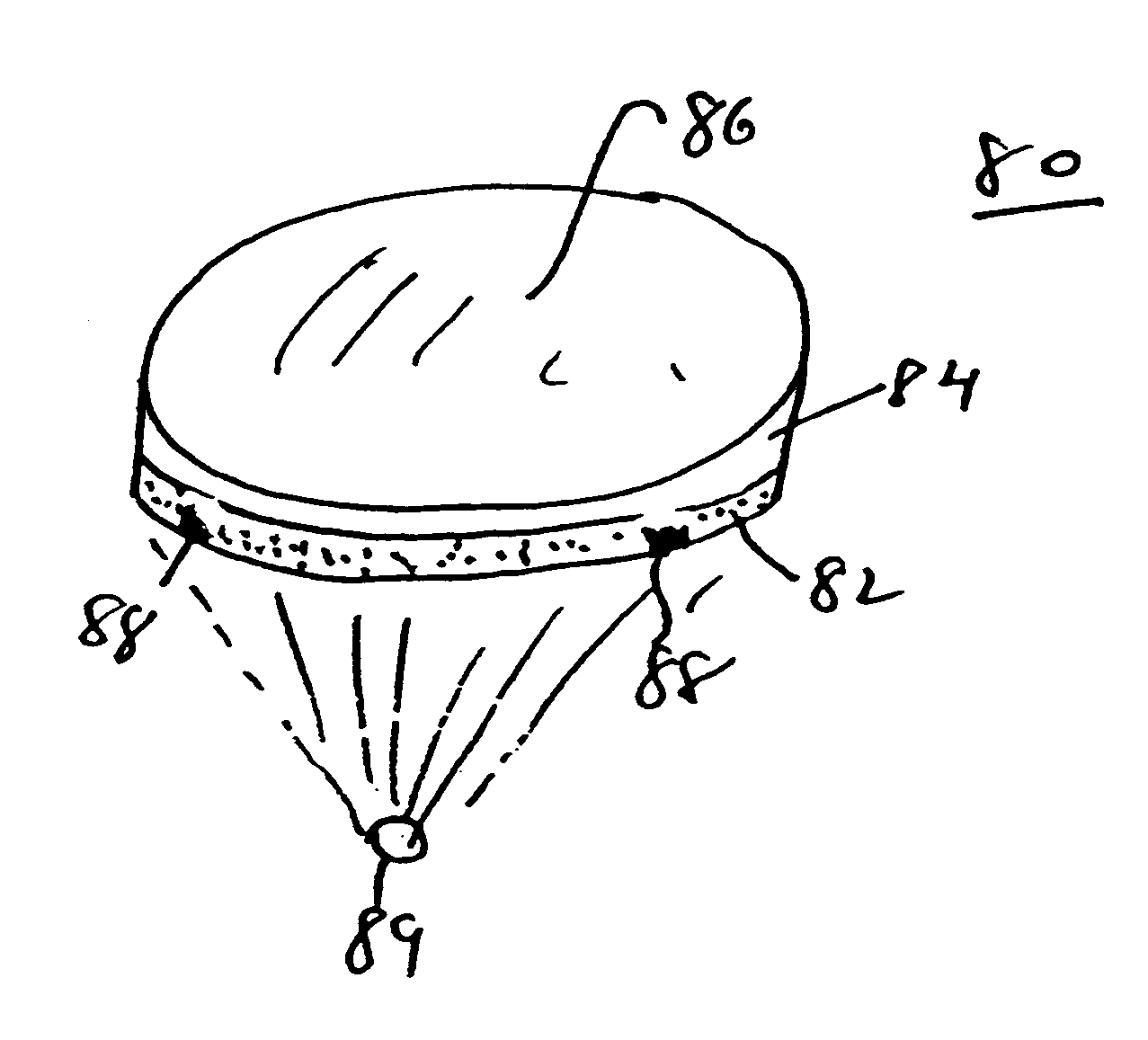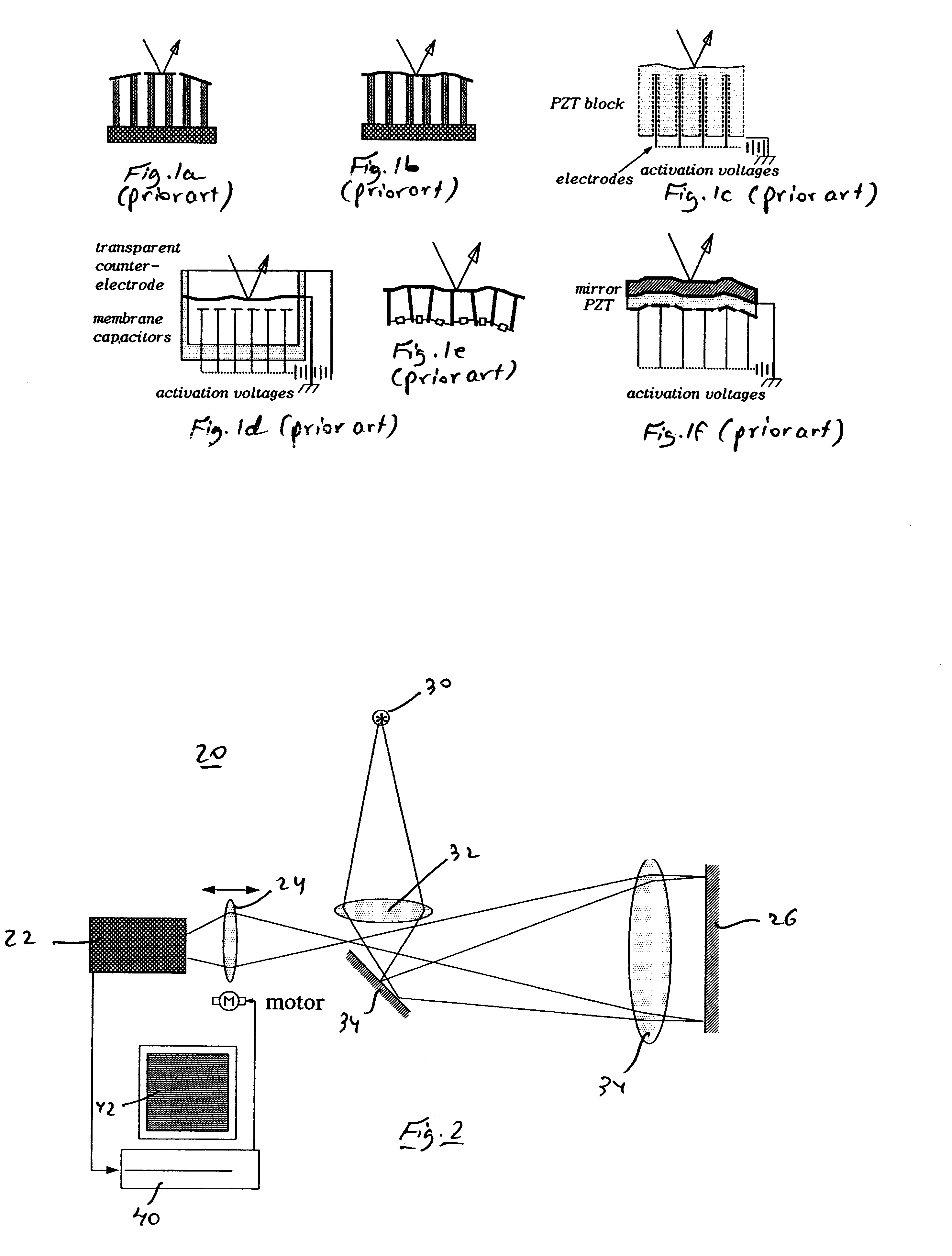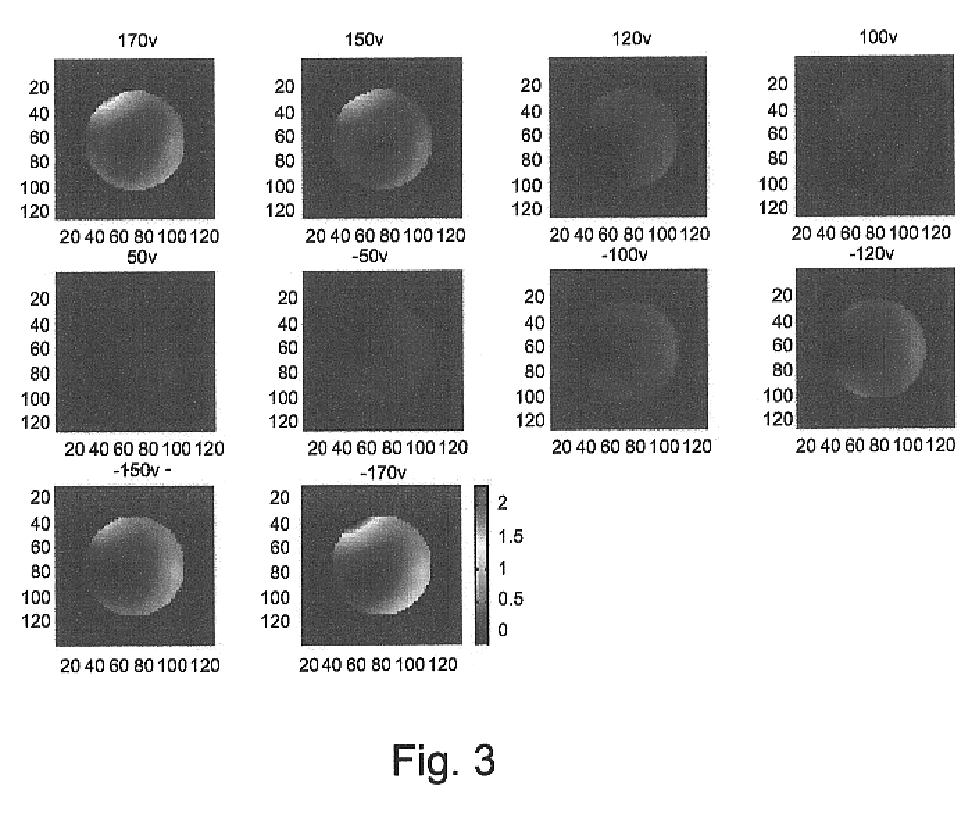Voltage and light induced strains in porous crystalline materials and uses thereof
a technology of porous crystalline materials and strains, which is applied in the selection of device materials, generators/motors, instruments, etc., can solve the problems of complex construction, slow progress of deformable mirrors, and heating created by flowing currents
- Summary
- Abstract
- Description
- Claims
- Application Information
AI Technical Summary
Benefits of technology
Problems solved by technology
Method used
Image
Examples
example 1
Construction of a Mirror
The mirror was constructed of a silicon wafer, polished on both sides, whose front (mirror) side was evaporated with a reflective layer and the wafer was annealed at 450.degree. C. for approximately 30 minutes. 1" or 2" n-type wafers were used, with a diameter of the porous area of 0.5" and 1". The back side of the wafer was made porosive by etching in HF:ehanol (1:1) solution, with the HF itself dissolved in water (1:1). An initial current of 120-130 mA, (24 mA / cm.sup.2) was applied to the sample, while it was illuminated by a 50 W halogen lamp. The etching lasted for about 35 minutes, which sets the thickness of the porous layer to 50 micrometers. The sample was washed a few times by ethanol, then left in ethanol for 30 minutes for final removal of the HF. It was then passivated by growing oxygen on the porous layer, in oxygen atmosphere for 30 minutes at 450.degree. C. This is a standard processing technique of silicon wafers, and requires rather a simple ...
example 2
Theoretical Consideration
Another way to look at the mirror is to think about it as a set of pistons operating parallel to the surface of the mirror, pulling the elements towards each other and creating bending moments.
The strain of a plate made of two such layers can be shown to follow the biharmonic equation, which can further be reduced to the harmonic (Poisson) equation for simple boundary conditions. Since in electrostatic pull the stress is proportional to the square of the voltage, the reflected wave front excursions W(r) (equal to twice the strain) are assumed to follow:
.gradient..sup.2 W(r)=.gamma.[dV(r)+mV.sup.2 (r)]
where V(r) is a continuous description of the voltage on the electrodes. d and m the piezoelectric and electrostrictive constants, and .gamma. depends on geometrical factors and Poisson's ratio and Young modulus of the porous silicon and crystal silicon[C. Schwartz, E. Ribak, and S. G. Lipson, `Bimorph adaptive mirrors and curvature sensing`, J. Opt. Soc. Am. A ...
example 3
An Optical System Incorporating the Mirror
Referring now to FIG. 2, a simple optical system 20 was constructed that allows one to re-image different planes on a camera 22. System 20 includes a point source 30 and a lens 32 so as to focus light just before a surface of a mirror 34. Mirror 34 is so positioned so as to reflect the light through a collimating lens 34 onto a sample 26, which is a mirror in accordance with the teachings of the present invention made and constructed as described hereinabove, and from which the light is reflected back through lens 34 to a motorized (M) focusing lens 36 which focuses the light onto a CCD camera 22. By moving lens 24 in front of camera 22, one can choose two planes to overlap (before and after reflection from sample 26), or at any two other locations using a frame grabber 40 and an appropriate computer 42 and software.
In order to find the response of the mirror to voltage, it is easier to focus one of the locations at the mirror surface itself...
PUM
| Property | Measurement | Unit |
|---|---|---|
| refractive index | aaaaa | aaaaa |
| thick n-type | aaaaa | aaaaa |
| current density | aaaaa | aaaaa |
Abstract
Description
Claims
Application Information
 Login to View More
Login to View More - R&D
- Intellectual Property
- Life Sciences
- Materials
- Tech Scout
- Unparalleled Data Quality
- Higher Quality Content
- 60% Fewer Hallucinations
Browse by: Latest US Patents, China's latest patents, Technical Efficacy Thesaurus, Application Domain, Technology Topic, Popular Technical Reports.
© 2025 PatSnap. All rights reserved.Legal|Privacy policy|Modern Slavery Act Transparency Statement|Sitemap|About US| Contact US: help@patsnap.com



